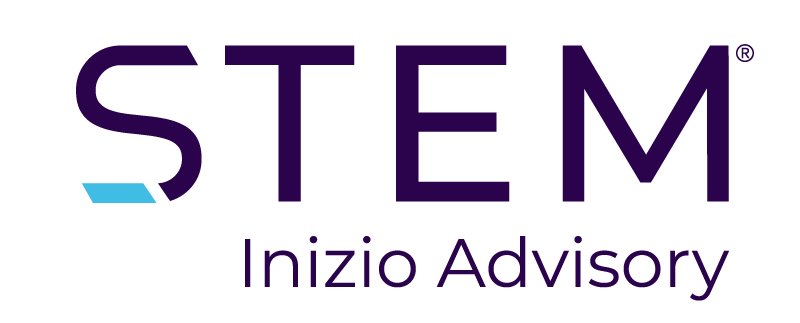Authored by: Nick Syndercombe, Country Lead UK & Ireland
Pharma customer engagement has significantly evolved since 2020, and some distinct trends are appearing. In this article, STEM explores trends in customer engagement with pharma commercial leadership teams, through in-depth analysis of UK projects in the past 3 years, as well as engagement with pharma leadership team members.
The findings suggest a more nuanced approach is forming as hybrid engagement develops. This includes identifying commercial teams with a positive mindset as statistically higher performers for virtual interaction, as well as seeing double-figure improvement in outcomes when discussing individual needs during patient calls.
The future commercial field team is a big discussion in pharma. With the role of field-based teams as implementers or orchestrators when it comes to the customer journey topping conversations – for instance, referencing previous interactions with HCPs supporting better outcomes. In addition, the need for cross-functional account management teams is heating up as a trend – as the benefits of high-level collaboration reveal themselves as a selling tool.
1. A blended engagement model
Many UK pharma companies are running a hybrid model of customer engagement. However, there’s a push at senior levels to return to a predominantly face-to-face (F2F) approach.
It’s an understandable reaction, going back to a model that has proven to be successful for many decades. But conversations with a cross-section of commercial leadership teams revealed that most prefer a blended engagement model – even if they’re not quite sure of the best balance.
Analysis of UK projects over the previous three years shows that training, coaching, and materials for screen-to-screen (S2S virtual) interactions have improved considerably since 2020. As a result, S2S calls are now just as effective as F2F in creating a good selling outcome (i.e. a clear HCP behavioral change) and offering the benefits of flexibility and coverage.
The critical issue here is that the highest-performing teams are those with a positive mindset for their chosen engagement channels – and that must be driven from the very top.
STEM advises clients to keep S2S as part of the customer engagement model – as it’s proven to work with the right support and mindset. It’s crucial, however, to measure the mindset and belief in a go-to-market model across the whole cross-functional team and the impact the approach has on outcomes. Leadership can then use this insight to drive competitive advantage by shaping the right hybrid blend for a team, creating the optimal channel mix based on customer preferences while moving towards a more customer-centric model.
2. Emotive, patient-centric selling
Regardless of engagement channel, field teams must work harder than ever to achieve behavioral change. A better understanding of the skills people need and in which environment will go a long way towards making their approach more effective.
Our observations from UK projects show that in S2S calls, emotive, patient-centric conversations are the core driver for success. Discussing patient needs is almost twice as likely to result in a good selling outcome than if they’re not discussed.
While patient-centricity is also important for F2F, the most important aspect in these types of engagements is discussions focusing on replacing a competitor’s product. Evidence shows that challenging HCPs on their beliefs about competitor products by asking effective questions is three times more likely to lead to a good selling outcome.
When deciding on an optimal blend of engagement channels, and as target stakeholders become increasingly broad and more challenging to access, it’s vital that every interaction counts. Analyze the entire cross-functional team, not just salespeople, to ensure everyone understands a product’s key drivers to success – and that teams are hitting those messages consistently.
3. Referencing previous HCP interactions
With the move to hybrid working and omnichannel engagement, the big question STEM clients ask is: what does the commercial field team of the future look like? Should field teams be orchestrating the customer journey or merely implementing it? It’s a topic that merits a blog all of its own, but right now, there are advantages when field teams take a more orchestrated approach, particularly when it comes to the customer continuum.
Analysis of UK clients’ S2S interactions revealed that only 30% of selling calls reference a previous interaction with the HCP. The other 70% are missing out because those who make that reference are more likely to uncover a clear growth opportunity and achieve a good selling outcome.
These benefits highlight the importance of the customer continuum – when all elements of the mix build on the previous interaction in a logical, sequential manner – particularly as access becomes increasingly challenging.
What other omnichannel elements of the conversation, such as emails, webinars, and website imprints, should be consistently leveraged to build better customer engagement and generate long-term results? The only way to find out is by analyzing a team’s interactions and comparing them to the rest of the industry.
4. Cross-functional account management
Cross-functional account management is as important as ever, but there is concern that the concept has lost traction, chiefly due to fewer in-person team interactions and a lack of skills development.
While no one knows what the rep of the future looks like, those pharma companies approached by STEM do want cross-functional account management, with teams who have the right strategic mindset to work within a clear, structured framework. And that doesn’t start with sales; it starts with the most senior leaders and runs throughout the entire business.
It’s critical to identify best practices in cross-functional alignment, roles, and responsibilities, which provide a clearer understanding of where teams are succeeding – and where they need support to work seamlessly together.
Summary and key takeaways
As the pharmaceutical industry looks to take steps toward greater customer experience, those that commit to the right engagement models in an increasingly complex UK environment, will reap the rewards.
A blended engagement model. Despite a trend of pushing for the return of face-to-face engagement, commercial leadership teams prefer a mix of face-to-face and screen-to-screen (S2S). Highest performing sales teams are those with a positive mindset during S2S engagement.
Emotive, patient-centric selling. In S2S calls, emotive, patient-centric conversations are the core driver for success. Discussing patient needs is almost twice as likely to result in a good selling outcome. Challenging HCPs on their beliefs about competitor products by asking effective questions is three times more likely to lead to a good selling outcome.
From the boardroom to the field team. Discussions around a field-based team’s role in orchestrating or implementing a customer journey are heating up. Only 30% of selling calls in STEM’s analysis reference a previous interaction with the HCP. A missed opportunity for a good selling outcome.
Cross-functional account management needs to evolve. Pharma companies want cross-functional account management, with teams with the right strategic mindset to work within a clear, structured framework. And that doesn’t start with sales; it starts with the most senior leaders and runs throughout the entire business.
To learn more and explore how your brand is performing vs these trends, contact Nick.Syndercombe@stemhealthcare.com or contact your local Project Director.

Related reading.
Jump to a slide with the slide dots.
Will 2025 be a tipping point to unlock innovation in pharma commercialization?
Explore how AI is revolutionizing pharma, driving efficiency & impact. Get expert insights & trends for 2025. Download the report now!
Read moreFrom metrics to impact: Selecting the right measures to determine MSL value
MSLs are now strategic leaders—but how do you measure their value? STEM’s Ryan Caradonna explores the metrics behind their true impact.
Read moreEnhancing pharma brand performance through in-depth customer engagement insights
In today’s dynamic pharmaceutical landscape, having a high level of strategic alignment and the flawless execution of this strategy is crucial.
Read more